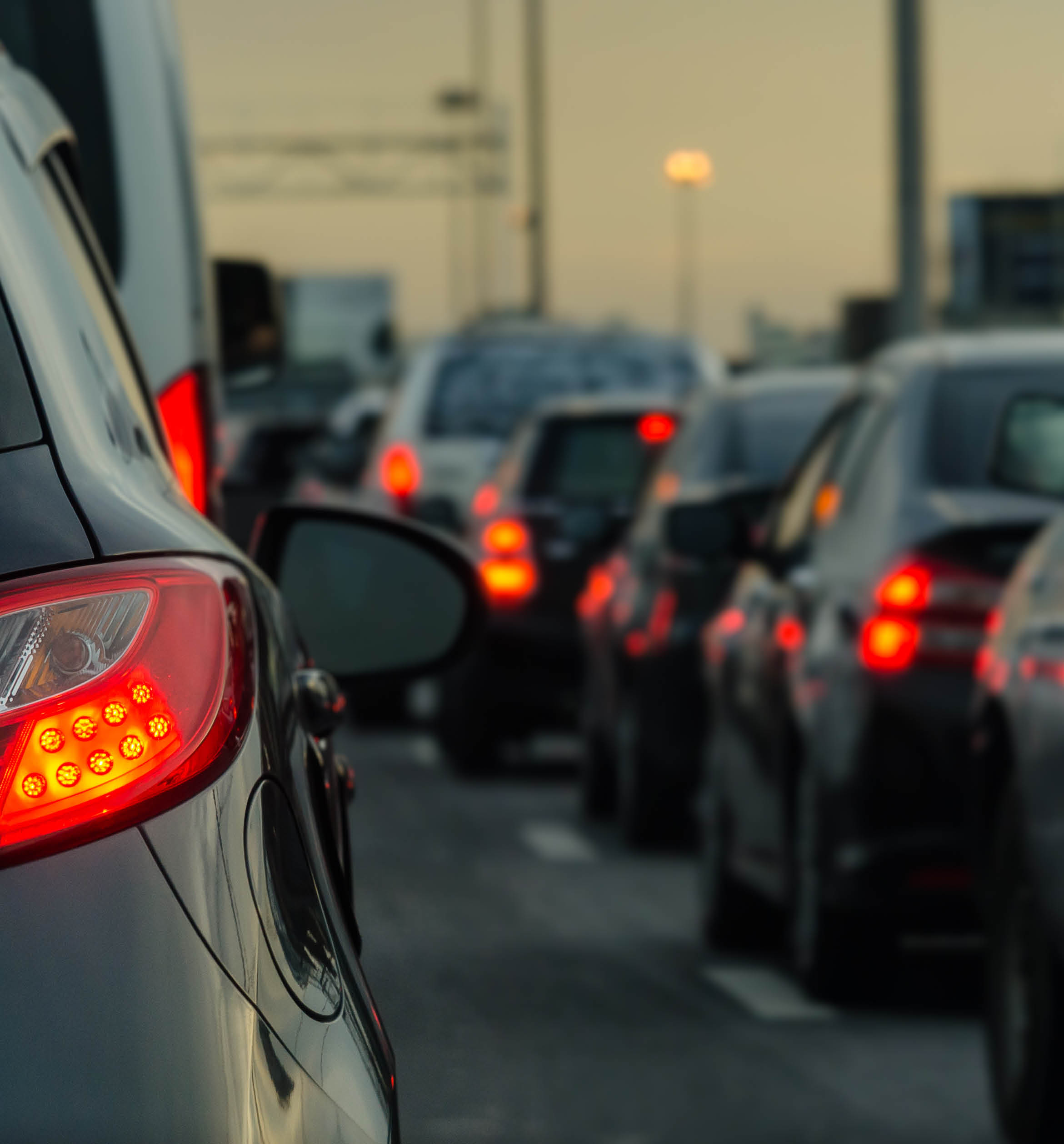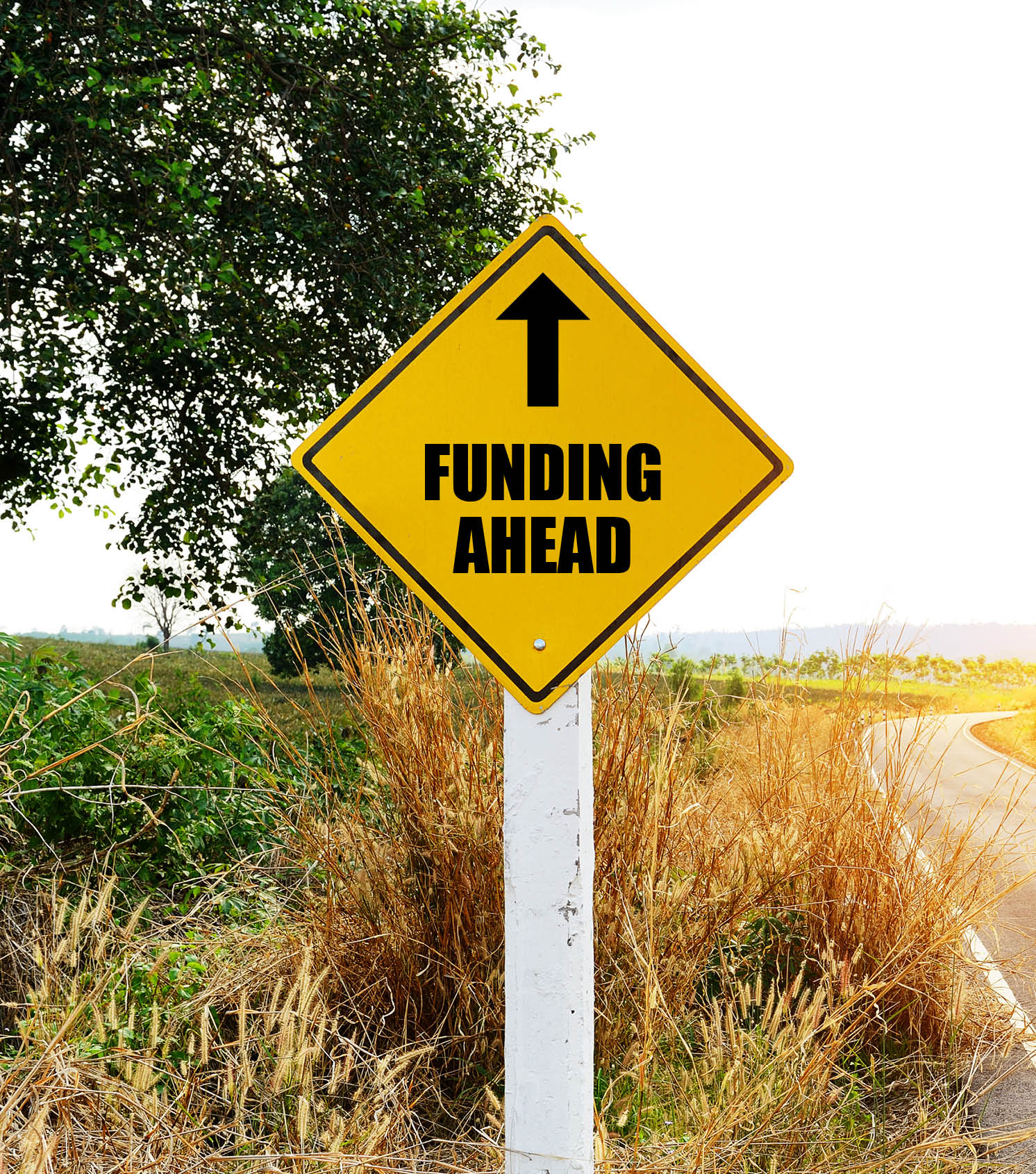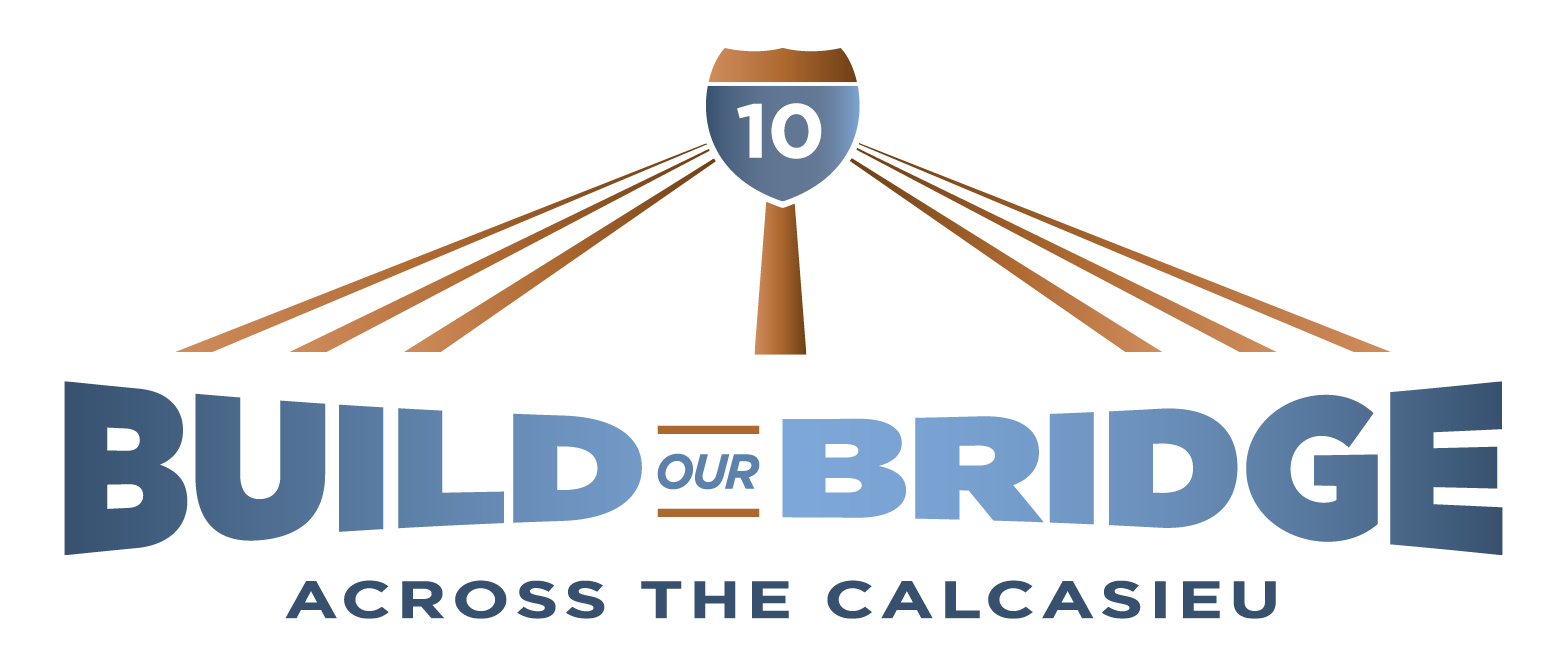
The Case for a New Bridge
When the current I-10 Calcasieu River bridge opened for traffic in 1952, it was designed for a traffic load of 37,000 per day and a 50-year life span. Today, the average daily crossings are over 90,000. Safety and structural concerns regarding the bridge are well-documented. Replacing this bridge has been a topic of concern and debate for decades, but the funding has never been designated. The I-10 Bridge is vital to the economic fabric of our region, and we cannot afford to wait while the state and federal government continue to delay and allocate funds to projects in other areas. With the economic growth taking place in Southwest Louisiana, daily crossings will only continue to increase.
The I-10 Bridge Task Force was formed to pursue any and all funding options to make a new bridge a reality sooner, rather than later.
History and Structural Concerns

Driving Southwest Louisiana Forward
The Chamber SWLA I-10 Bridge Task Force has successfully refocused attention on the promised, long-overdue replacement bridge. In January 2019, after exhaustive research seeking funding options and finding there were none available at this time, the group released recommendations that provided the state with a well-researched, detailed action plan that would result in a new bridge within five years without incurring any debt or requiring any tax revenue.
That plan called for a public private partnership, or P3, which harnesses private expertise for public benefit. P3s allow public agencies like LA DOTD to leverage private sector resources and innovation and share risk on critical projects. LADOTD will work with a private partner, or partners, to design, finance, construct, and operate the new I-10 Calcasieu River Bridge with funding for the project generated through an electronic toll system.
I-10 Task Force Recommendations
Funding Progress Pathways Appear to Be Opening
After multiple meetings and communication between the Task Force and our state and federal delegations, much progress toward the proposed plan has taken place. Highlights include:
- State approves $30 million toward new bridge from the 2020 Coronavirus Response and Relief Supplemental Appropriations Act.
- Governor John Bel Edwards committed $85 million in state funding as the state match to the promised federal funding.
- Designation of a project manager for the I-10 Calcasieu River Bridge project.
- Louisiana Legislature passed a bill dedicating any industrial spill damage funds to a newly created Calcasieu Parish Bridge Fund.
- State legislative committee approved P3 Process for constructing a bridge.
- Funds committed by the Calcasieu Parish Police Jury, Lake Charles City Council and the Calcasieu Parish Industrial Development Board to support the campaign to build a new bridge.



The Case for a New Bridge
When the current I-10 Calcasieu River bridge opened for traffic in 1952, it was designed for a traffic load of 37,000 per day and a 50-year life span. Today, the average daily crossings are over 90,000. Safety and structural concerns regarding the bridge are well-documented. Replacing this bridge has been a topic of concern and debate for decades, but the funding has never been designated. The I-10 Bridge is vital to the economic fabric of our region, and we cannot afford to wait while the state and federal government continue to delay and allocate funds to projects in other areas. With the economic growth taking place in Southwest Louisiana, daily crossings will only continue to increase.
The I-10 Bridge Task Force was formed to pursue any and all funding options to make a new bridge a reality sooner, rather than later.
History and Structural Concerns
Driving Southwest Louisiana Forward
The Chamber SWLA I-10 Bridge Task Force has successfully refocused attention on the promised, long-overdue replacement bridge. In January 2019, after exhaustive research seeking funding options and finding there were none available at this time, the group released recommendations that provided the state with a well-researched, detailed action plan that would result in a new bridge within five years without incurring any debt or requiring any tax revenue.
That plan called for a public private partnership, or P3, which harnesses private expertise for public benefit. P3s allow public agencies like LA DOTD to leverage private sector resources and innovation and share risk on critical projects. LADOTD will work with a private partner, or partners, to design, finance, construct, and operate the new I-10 Calcasieu River Bridge with funding for the project generated through an electronic toll system.
I-10 Task Force Recommendations
Funding Progress Pathways Appear to Be Opening
After multiple meetings and communication between the Task Force and our state and federal delegations, much progress toward the proposed plan has taken place. Highlights include:
- State approves $30 million toward new bridge from the 2020 Coronavirus Response and Relief Supplemental Appropriations Act.
- Governor John Bel Edwards committed $85 million in state funding as the state match to the promised federal funding.
- Designation of a project manager for the I-10 Calcasieu River Bridge project.
- Louisiana Legislature passed a bill dedicating any industrial spill damage funds to a newly created Calcasieu Parish Bridge Fund.
- State legislative committee approved P3 Process for constructing a bridge.
- Funds committed by the Calcasieu Parish Police Jury, Lake Charles City Council and the Calcasieu Parish Industrial Development Board to support the campaign to build a new bridge.
The Case for a New Bridge
The Case for a New Bridge
When the current I-10 Calcasieu River bridge opened for traffic in 1952, it was designed for a traffic load of 37,000 per day and a 50-year life span. In 2016, the average daily crossings were over 80,000. Safety and structural concerns regarding the bridge are well-documented. Replacing this bridge has been a topic of concern and debate for decades but the funding has never been designated. The I-10 bridge is vital to the economic fabric of our region and we cannot afford to wait while the state and federal government continue to delay and allocate funds to projects in other areas. With the economic growth taking place in Southwest Louisiana, daily crossings will only continue to increase.
Driving Southwest Louisiana Forward
Recommendations from the Chamber SWLA I-10 Bridge Task Force have successfully refocused attention on the promised, long-overdue replacement bridge. These recommendations, which were released at a news conference in January 2019 provide the state with a well-researched, detailed action plan to tackle the most critical interstate bridge project in Louisiana within five years without incurring any debt or requiring any tax revenue.
The plan calls for a public private partnership, or P3, which harnesses private expertise for public benefit. P3s allow public agencies like LADOTD to leverage private sector resources and innovation and share risk on critical projects. LADOTD will work with a private partner, or partners, to design, finance, construct, and operate the new I-10 Calcasieu River Bridge, with funding for the project generated through an electronic toll system.
Tolling Will Make a New Bridge a Reality
Tolling is often used in P3 projects to help the private partner support ongoing operations and maintenance to improve and ensure the flow of traffic and support the goal of congestion mitigation. A P3 delivers innovation, efficiencies and design excellence. Forming a P3 will allow LADOTD to use private sector technical, managerial, and financial resources to build the new I-10 Calcasieu River Bridge and achieve-long term objectives like increasing capacity and facilitating free flowing traffic. The builder would have to be repaid with the use of electronic tolling like we see in Houston and many other cities across the country. Tolling provides funds to make costly improvements to the regional transportation infrastructure efficiently. Tolling is a proven, common sense solution for the I-10 bridge project.
The new I-10 bridge will feature all-electronic tolling—allowing drivers to travel safely and efficiently without stopping at a toll booth. Electronic toll gantries will span the roadway and pick up signals from transponders or take photos of the license plate to collect the toll.
Task Force research has shown that thru-transit traffic will pay the majority of toll fees. Transit traffic does not typically choose an alternative non-toll route. I-10 Bridge tolls will be reduced for local users and the I-210 Bridge will remain toll-free.


